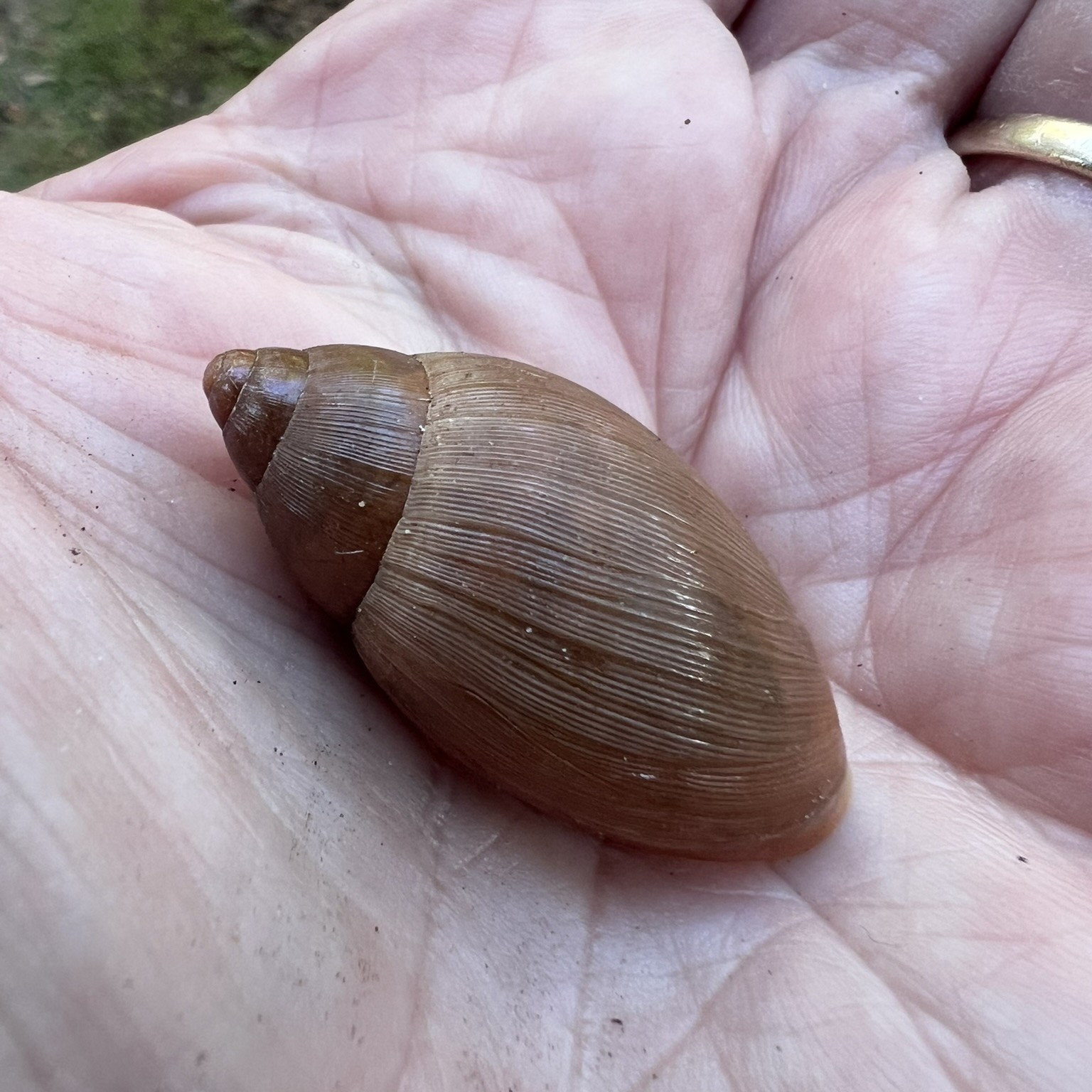A Rosy Wolfsnail is hard to miss when one crosses your path. They are one of the larger air-breathing terrestrial snails in the southeastern U.S. Slugs also belong to this informal group of invertebrates, known as pulmonates, that use lungs to breathe. Besides their size, the light pink color of their elongated shell makes them stand out, reflected in their species name “rosea”.
The genus name Euglandina translates to good or true “eu” and acorn shaped shells “glandina”. Gotta love the use of Latin and Greek words, prefixes, and suffixes used for scientific names – very helpful for science nerds like me.
The other thing that makes these snails interesting is their role as predators of other snails and slugs. I can hear some of you yelping out loud, saying “I need some of those to eat those nasty slugs that eat my flowers!!!” Well, calm yourselves, for as with many predators, their numbers are typically much smaller than the numbers of their prey.
I have known these critters since childhood, often finding them under boards and logs, or other moist places and I always thought they were pretty. When needing a collection of mollusks for a graduate class in invertebrate taxonomy, I was the go-to wolfsnail collector, bartering my extra snails for other species I needed. It pays to have skills.
By that time, we had learned of their predatory nature and decided to see for ourselves if they were as voracious as reported. A couple of us shared an office where we had established a terrarium (10-gallon aquarium), in which we had amassed a couple of nice large slugs. Yes, we were an odd bunch. As I dropped a single Rosy Wolfsnail into the far side of the aquarium, we were instantly treated to what passes as slug and snail cardio.
Our slugs immediately raised their antennae straight up as far as they could stretch, having instantly sensed the presence of the snail. For the snail’s part, it did the same, knowing that lunch was at hand. What followed was a race, as much as slugs and snails can manage, to find refuge for the slugs, or capture for the snail. In about the time it took to drink a cup of coffee the first slug bit the dust. The others headed for the corners, only to meet their demise soon after.
As snails go, Rosy Wolfsnails are fast, once they encounter signs of prey. They are great trackers, following the slime trails left by slugs and the smaller snails that make up their diet. As for what eats them, rats are apparently their main predator.
So, keep your eyes out for these large and pretty snails. And if you see one, wish it good hunting.
Hope to see you in our great outdoors!




